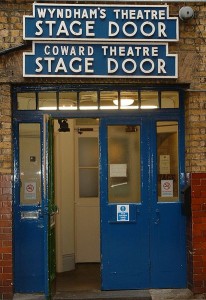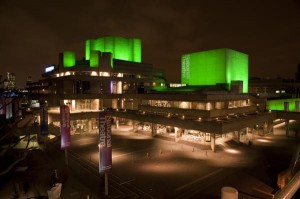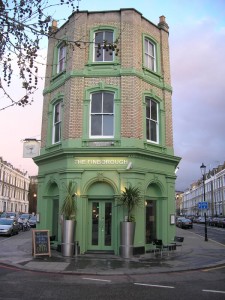London is the theatre capital of the world. Yes, so Broadway’s pretty important too, but if I can be heard above the howls of rage emanating from the Great White Way, hear me out – the sheer range, ambition and excellence of what is on offer here puts it wig and shoulders above the rest. From the glittering lights of the West End to a room above a pub where tomorrow’s Sam Mendes is learning his craft, you won’t get a better night than one inside a theatre in London.
The West End
Let’s begin with the West End, where you’ll see the biggest shows in the grandest theatres, and pay the most for the privilege. Jostling for space
in the 50-odd theatres concentrated around Covent Garden and Soho is the best of work imported from abroad (US hit The Book of Mormon has just landed and is proving to be the hottest ticket in town), renowned actors like Helen Mirren and Judi Dench treading the boards in plays old and new, toe tapping jukebox musicals with hits from favourite bands (Mamma Mia!, for example, or Jersey Boys) and homegrown triumphs from the subsidised sector (more of that later). Going out in the West End always feels like a treat, as you settle into your red velvet seat, glance around at the corniced interiors, see the sparkle of the chandeliers and wait for the curtain to rise. You might even sip your glass of chilled Pinot Grigio as you do. But therein lies the rub, for how much did that tipple cost you? £7, you say? Bargain. Because if you’re sitting in a top price seat, you’ve probably paid above £80 for the privilege. If you went for the next tier down, it’s likely you’ve dropped above £50. If owning a sailing boat can be equated to standing under a cold shower tearing up £50 notes, feeding a theatre habit is the equivalent of being forced to sit for 3 hours, knees pushed against a hard surface, trying unsuccessfully to ignore the person nearby rustling her toffees and talking to her neighbour (see here if this strikes a particular chord). And, of course, tearing up £50 notes.
Theatre deals
But feeding the habit is, for some of us, a necessity, and there are a couple of tricks of the trade which will spare you having to remortgage your house. Firstly, and most obviously, sign up to a few theatre newsletters, many of which offer discounted tickets. Whatsonstage.com is one of the biggest of these and offers some great deals, as does Official London Theatre. The latter also runs an annual promotion of London Theatre, with particularly good offers to a range of shows every January. Presumably the die-hard theatre nuts are spending the first month of each year trying to stick to their resolution not to spend so much money on theatre tickets. If you’re able to be flexible then many shows offer discounts if you turn up and buy in person on the day, and the TKTS booth in Leicester Square is a good centralised hub for these deals. Some companies are also wising up to the idea that to develop theatre audiences for the future then tickets need to be accessible to punters on a range of budgets, and so offer a number of heavily discounted tickets per show – the Michael Grandage company for example. A word of warning on this front – many of these cheap seats have a very restricted view, and so you end up with the conundrum of whether to pay £15 to see half of a show (never sit in the balcony, unless you believe most actors can emote through the tops of their heads and don’t mind about not seeing the back of the set) or shell out a bit more in order to get the full experience. Here customer reviews are beginning to come to the rescue – sites such as www.seatplan.co.uk and www.theatremonkey.com offer considered opinions and audience feedback on where you can get the best value for money in each venue.
Subsidised theatre
Let’s move on, though, to what is known as the subsidised sector – venues with government investment which allows them to create some of the UK’s best work for much more affordable prices. Much of the work which lights up the West End, in fact, originates here – War Horse, One Man Two Guvnors, Jerusalem and Jumpy being recent examples. These theatres are dotted round London and tend to have a specific focus, whether it’s the new writing that energises the Royal Court or the Bush, the international work which marks out the Gate and the Young Vic, or the sleek classics featuring starry casts which are the staple of the Almeida (N1) or the Donmar Warehouse (WC2). And of course there’s the National, inhabiting its brutalist, love-it-or-hate-it building on the South Bank. Even if you hate the building you’re unlikely to hate what goes on inside. The two theatres in the building (usually three – one is currently being renovated) house classics, new writing, physical work, international transfers and everything in between, with a rich programme of extra-curricular talks (‘Platforms’) and free music in the foyer. The Shed, a huge red block currently sitting in the National’s forecourt, is a temporary building which will present a more experimental programme.
As a rule, these theatres are probably easier to navigate than the West End. Most have good websites which offer clear information about the venue and what’s on, and sell all their own tickets, although they might also offer discounts through the mailing lists mentioned above. Many will also offer deals aimed at getting either younger or local people through their doors (see the National’s Entry Pass scheme, or the Bush Local card for example) or their own cheap tickets scheme such as the National’s Travelex tickets or the Donmar’s Front Row seats. In an effort to make picking your way through the minefield of choice easier, 12 of them have grouped together to create Taste Theatre, a site which allows you to search either by venue or by what you’re after (‘funny’, ‘spectacular’, ‘hard hitting’ etc). And if you’re a twitter person, make sure you follow the venues you’re interested in, to find out both about what’s going on and about last minute offers and availability.
Fringe and ‘off West End’
Finally, we come to a group of theatres which go by a range of names, from the slightly patronising ‘fringe’ to the more respectful ‘off west end’. These are a somewhat motley selection of rooms above pubs, railway arches, murky studios, people’s front rooms (ok, not really, but it’s only a matter of time….) Don’t let this put you off though, because it’s here that you can genuinely get not only value for money (ticket prices rarely stray above £20) but also some of the best that the capital can offer. These spaces are a training ground for writers, directors, designers and actors who then routinely go on to light up the West End and beyond, and the quality of these performances, although variable, can be astonishing. A few stand out as being consistent in their ability to present extraordinary shows – the tiny Finborough in Earls Court, Battersea’s fabulous Battersea Arts Centre, Theatre 503 and the recently relocated Southwark Playhouse (now based in Elephant and Castle until 2018 while its permanent home is renovated). Ignore these gems at your peril, and book fast if you hear about something you fancy – many of them have only 50 seats so sell out at the drop of a 5 star review.
So, clear as mud? There’s a lot out there to wade through. Don’t panic. But do dip your toe in. You’re lucky enough to be living in the theatre capital of the world (shush, New Yorkers) – don’t let the parade pass you by.


